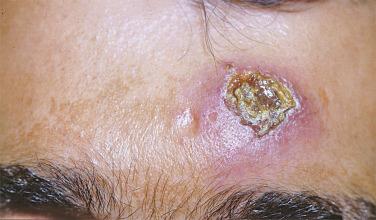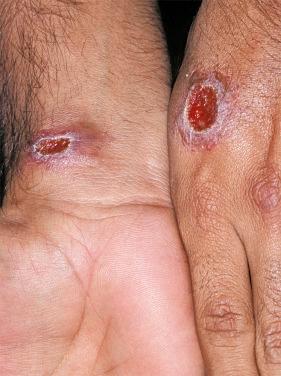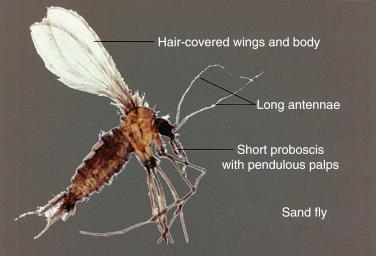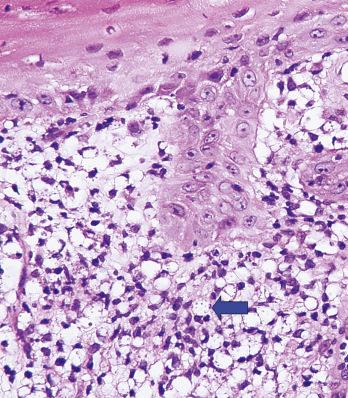Physical Address
304 North Cardinal St.
Dorchester Center, MA 02124
Trichomoniasis typically presents with vaginal pruritus and a frothy discharge, and responds well to treatment with metronidazole.
Systemic therapy for leishmaniasis is recommended for patients who are immunosuppressed or who acquire infection in areas where mucocutaneous disease has been reported.
Suramin remains useful to treat early Rhodesian trypanosomiasis, while melarsoprol is the drug of choice for central nervous system (CNS) disease. Pentamidine is still used for Gambian disease.
For American trypanosomiasis, nifurtimox and benznidazole are used to reduce the severity of the acute illness.
Acanthamoeba affects immunocompromised individuals, while Balamuthia mandrillaris causes erythema and induration of the central face and CNS invasion in previously healthy patients.
Trichomoniasis is caused by Trichomonas vaginalis , a flagellate protozoan. Trichomoniasis typically presents with vaginal pruritus, a burning sensation, and a frothy discharge. Male sexual partners may present with balanoposthitis.
A wet mount typically demonstrates the motile organism, but direct fluorescent antibody and polymerase chain reaction (PCR) assays are also available.
Treatment includes metronidazole, 2 g in a single oral dose or 500 mg twice a day for 7 days. A topical form is also available. Patients should be warned about disulfiram-type effects if alcohol is consumed. In pregnant women, topical clotrimazole may be used instead.
The rural type of Old World leishmaniasis is characterized by moist chronic ulcers that heal within 6 months. Rodent reservoirs carry the organism, which is transmitted via a sand fly vector. Dry lesions and recurrent lesions (leishmaniasis recidivans) are associated with the urban type of disease, caused by Leishmania tropica . New World disease may consist of only cutaneous lesions, especially with the mexicana variety. The primary lesion begins as a papule that becomes crusted, verrucous, or ulcerated, with an infiltrated red border ( Figs 34-1 and 34-2 ). Subcutaneous peripheral nodules represent a lymphangitic pattern of spread and lymphadenopathy may be present. On the Yucatan Peninsula and in Guatemala, the workers who harvest chicle for chewing gum develop chiclero ulcers on the ear. The etiologic agent is Leishmania mexicana and the sand fly vector Lutzomyia flaviscutellata ( Fig. 34-3 ). Uta occurs in the Peruvian highlands. As with the chiclero ulcer, lesions are found on exposed sites and mucosal lesions do not occur.



Disseminated cutaneous leishmaniasis occurs with both New and Old World diseases, but the most destructive manifestations occur with mucocutaneous New World disease. Diffuse anergic leishmaniasis may resemble lepromatous leprosy or Lobo’s disease.
Old World L. tropica , Leishmania major , Leishmania aethiopica , and Leishmania infantum cause cutaneous leishmaniasis. The latter also produced the Mediterranean form of visceral leishmaniasis. New World L. mexicana does not induce mucosal disease. Leishmania braziliensis guyanensis , Leishmania braziliensis braziliensis , and Leishmania braziliensis panamensis produce cutaneous lesions and the latter two are also associated with mucocutaneous disease. Leishmania donovani spp. donovani , infantum , and chagasi cause visceral leishmaniasis.
Cutaneous leishmaniasis is endemic in Southwest Asia, the Mediterranean and Latin America. In the United States, cutaneous leishmaniasis is most common in South Texas, but rare reports of cutaneous disease have occurred as far north as Pennsylvania and the Midwest.
Dogs and rodents are the natural reservoir hosts. The Old World vector is the Phlebotomus sand fly, whereas Phlebotomus perniciosus and Lutzomyia sand flies are the vectors for New World leishmaniasis. In humans, the aflagellare form (amastigote) is found in tissue.
Leishmania are nonencapsulated and are seen as intracellular organisms within histiocytes, containing a nucleus and a paranucleus. Within the histiocytes the organisms often line up at the periphery of a vacuole like the bulbs surrounding an old-fashioned movie marquee ( Fig. 34-4 ).

The diagnosis is established by demonstration of the organism in smears, biopsy, or culture. A punch biopsy from the active edge of the ulcer can be placed in Nicolle–Novy–MacNeal medium and shipped to the laboratory at room temperature. The Centers for Disease Control and Prevention (CDC) have support services available to provide media and diagnostic assistance. PCR is also available, but is not clearly superior to culture. Patients with forms capable of causing mucocutaneous disease need to be advised to monitor for signs of late sequelae/recurrence as disease can recur on the mucosal surfaces and present with nonspecific symptoms, i.e., rhinorrhea, and patients need to be followed closely if/when these types of symptoms develop.
Spontaneous healing of primary cutaneous lesions occurs within months and can be hastened with localized hyperthermia. Other options include topical paromomycin sulfate 15% plus methylbenzethonium chloride 12%, ketoconazole cream under occlusion, cryotherapy, and photodynamic therapy. Intralesional sodium stibogluconate antimony and emetine hydrochloride are also used, and in Old World cutaneous leishmaniasis some data suggest that intramuscular meglumine antimoniate in combination with intralesional meglumine antimoniate is superior to intralesional therapy alone. Itraconazole has fewer side effects than meglumine antimoniate but results have been mixed. Oral fluconazole and zinc sulfate have been used to treat L. major . Intralesional meglumine therapy may be acceptable for small solitary lesions in areas with a low risk of mucosal disease.
Systemic therapy is recommended for patients who are immunosuppressed or who acquire infection in areas where mucocutaneous disease has been reported. Intravenous sodium antimony gluconate (sodium stibogluconate) is administered at a dose of 20 mg/kg/day in two divided doses for 28 days. It can be obtained from the CDC Drug Service (Atlanta, GA 30333, USA). Antimony n -methyl glutamine (Glucantime) is used more often in Central and South America. Second-line systemic options include fluconazole, 200 mg per day for 6 weeks, ketoconazole, dapsone, rifampicin, and allopurinol. Some of these have not been subjected to controlled clinical trials, as is true of most topical treatments. Liposomal encapsulated amphotericin B has been used effectively in antimony-resistant disease. Intramuscular pentamidine is used for L. guyanensis cutaneous leishmaniasis resistant to systemic antimony. Miltefosine is being used for diffuse cutaneous leishmaniasis and post-kala-azar dermal leishmaniasis, but treatment failures have occurred in the setting of L. major and L. braziliensis infections. Patients with serotypes known to be associated with mucocutaneous disease should be monitored for nasopharygeal signs and symptoms. Active mucocutaneous disease may require amphotericin B or combination therapy with an antimonial and rifampin, azithromycin, interferon-γ, or interleukin-2.
Become a Clinical Tree membership for Full access and enjoy Unlimited articles
If you are a member. Log in here